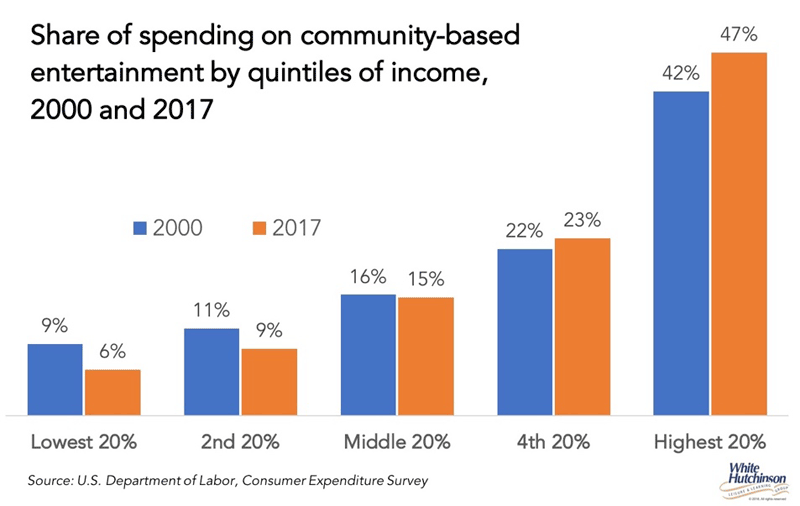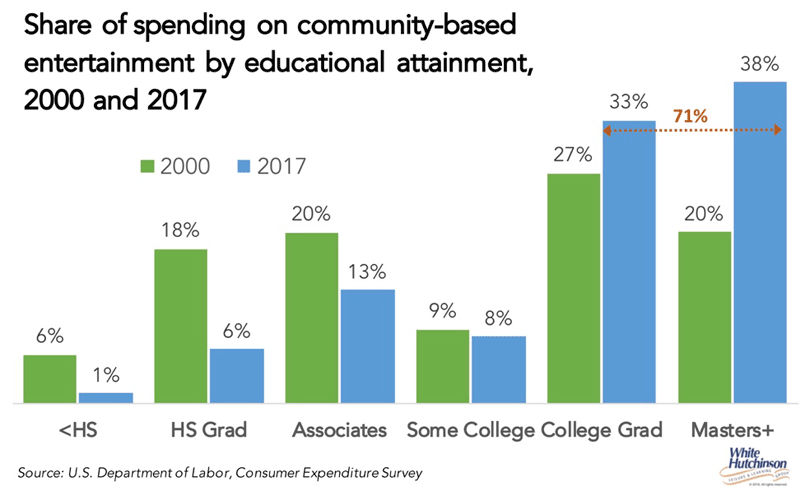
Vol. XVIII, No. 9, October-November 2018
- Editor's corner
- Ocean5 & Table 47 awarded LEED Silver Certification
- Having a positive impact means more than money for employees
- The latest on social media users
- Married-couples across the generations
- Expanding popularity of different games for social venues
- Pumpkin flavor time
- Old school eatertainment concepts losing the "eats"
- Plant-forward eating trend
- The truth about the mall apocalypse and the future of retail
- Eatertainment has gone to the dogs
- The winners of the 2018 Blended Burger Project
- Changing market share for community-based entertainment
Changing market share for community-based entertainment
We're seeing a larger and larger share of out-of-home community-based entertainment spending shifting to higher socioeconomic households. At the turn of the Century, the top 20% of households by income accounted for 42% of all spending. In 2017 they grew to almost half of all spending (47%) while the share of spending by all other quintiles of households declined in market share. In 2017, the top 40% of households by income ($69,000+) accounted for 70% of all the spending, an increase from 64% in 2000.

Likewise, when we look at community-based entertainment based on the educational attainment of the head of the household, the share of spending by households with a bachelor's or higher degree has risen from 47% in 2000 to 71% in 2017. Those college-educated households now comprise 42% of all households compared to only slightly more than one-quarter back in 2000 (26%).

What this means very simply is that the target market for community leisure venues (CLVs) is the higher socioeconomic households. Attracting that market requires higher quality facilities and food and beverage than in the past when the middle class was the primary market for most CLVs.
Vol. XVIII, No. 9, October-November 2018
- Editor's corner
- Ocean5 & Table 47 awarded LEED Silver Certification
- Having a positive impact means more than money for employees
- The latest on social media users
- Married-couples across the generations
- Expanding popularity of different games for social venues
- Pumpkin flavor time
- Old school eatertainment concepts losing the "eats"
- Plant-forward eating trend
- The truth about the mall apocalypse and the future of retail
- Eatertainment has gone to the dogs
- The winners of the 2018 Blended Burger Project
- Changing market share for community-based entertainment


